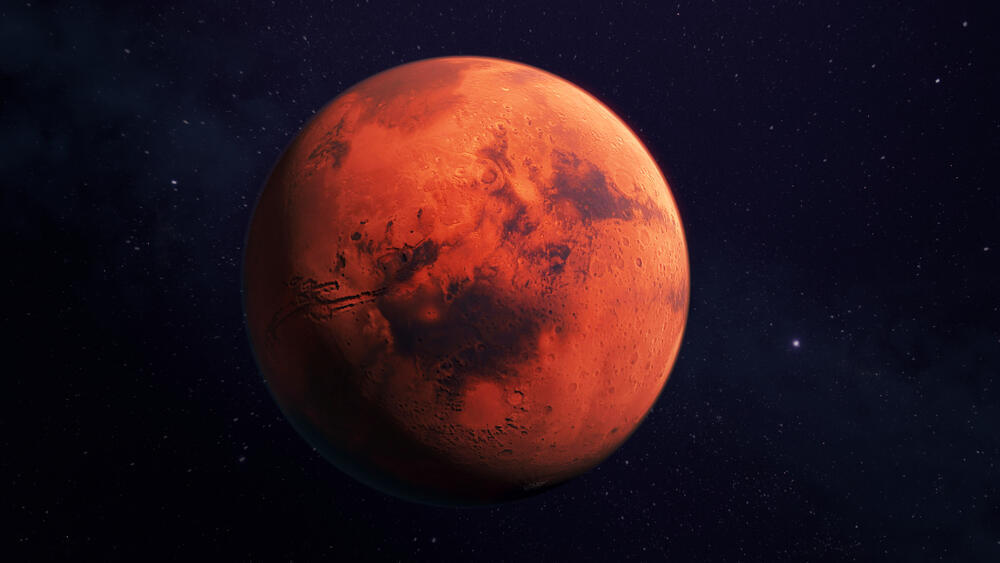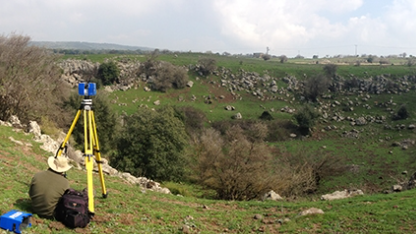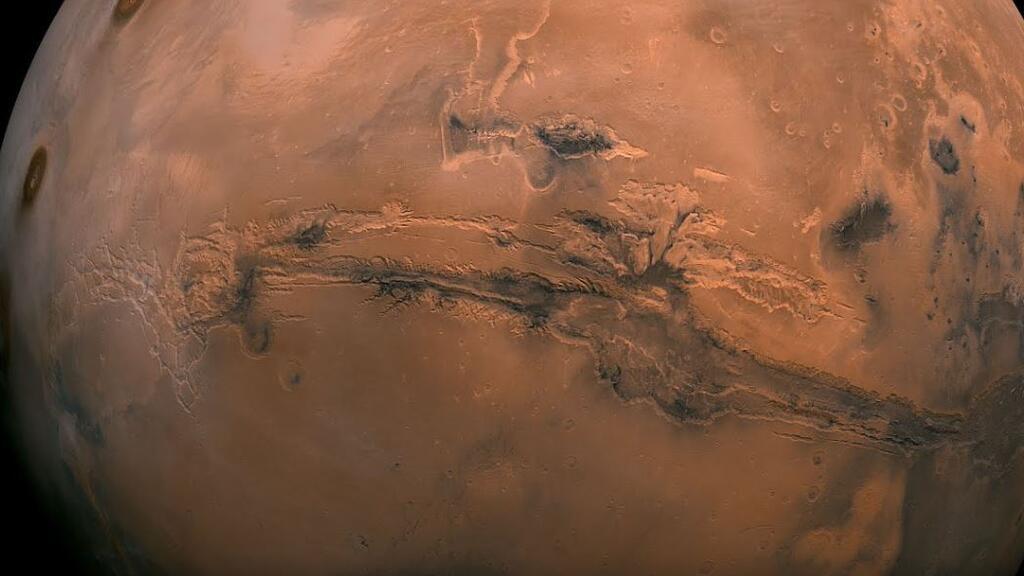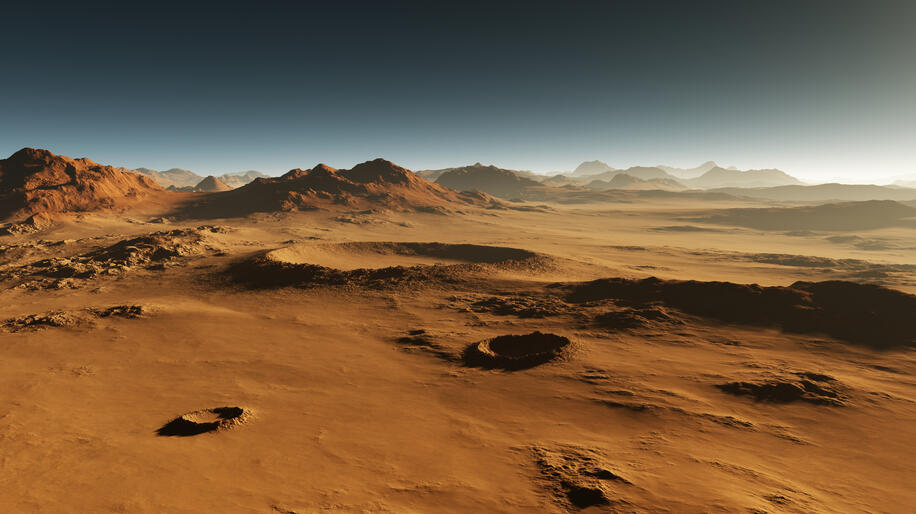The surfaces of the many rocky planets and moons in the solar system are covered with craters. The vast majority of these craters were created by highly powerful impacts of asteroids and commits, and studying them can provide insight into the processes that shaped the solar system throughout its long history.
Alongside these visible craters, there are also hidden craters in the form of deep and wide depressions that were formed in entirely different ways, some of which remain unexplained. Understanding the processes that led to the formation of these unique depressions may help us learn about the geological history of our neighboring planets and moons in the solar system.
6 View gallery
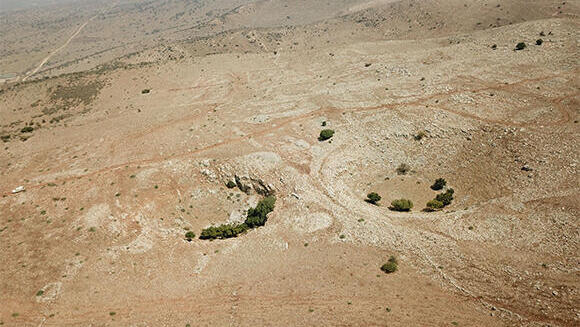

Depressions in the Golan Heights
(Photo: Prof. Oded Aharonson, Davidson Institute of Science)
From a practical standpoint, these depressions are also of interest - thanks to the protection they provide against radiation, meteorites and other hazards, they may serve as potential settlement sites for future missions to the Moon, Mars and to other planetary bodies.
Mars is a planet that exhibits such unique and unusual depressions on its surface. In various regions of its surface, pits and craters that present none of the typical signs of a collision event, have been identified over the years.
In contrast to collision sites, their features bear a closer resemblance to events in which the rocky surface collapses into a subsurface cavity, such as in the case of sinkholes. The depressions vary in size, ranging from a few tens of meters to hundreds of kilometers, and it is speculated that at least some of them may have formed due to collapse into emptied shallow magma chambers.
These unexplained depressions on Mars drew the attention of geologists Roy Naor and Itay Halevy, from the Earth and Planetary Sciences department at the Weizmann Institute of Science.
In a joint study, published in the Geological Society of America Bulletin, they suggest studying the formation processes of these pits by identifying and analyzing similar occurrences on Earth, which offers a more accessible, practical and convenient research environment.
Instead, the researchers decided to turn their attention much closer to home, practically in their backyard: the “Jubas'' in the Golan Heights. “Juba”, which means ‘pit’ in Arabic, is the name given to a collection of dozens of small depressions that are scattered over an area of roughly 30 square kilometers in the northern Golan Heights. The most famous of these is the “Great Juba” in the Odem Forest, which is open to visitors.
Similar to the Martian pits, the “Jubas” are also located at the periphery of an inactive volcanic region, on a relatively thin basaltic plateau overlying layers of sedimentary rock. Furthermore, similar to Mars, the mechanism of formation of these depressions is unclear.
There’s a debate among geologists as to the reasons underlying their formation, with some suggesting the existence of Jubas to be a result of steam eruptions caused by contact between magma and groundwater, while others propose that they formed due to collapse of the surface into underground caverns.
The researchers hypothesized that by using advanced technologies to map and analyze the surface characteristics of the Jubas, they would be able to accurately determine the mechanism of their formation, and subsequently apply their findings and conclusions to re-examine the pits on Mars.
For studying the Jubas, they selected tools from the field of mapping and surface measurements, which are the main tools commonly used by geologists to study other planets.
6 View gallery
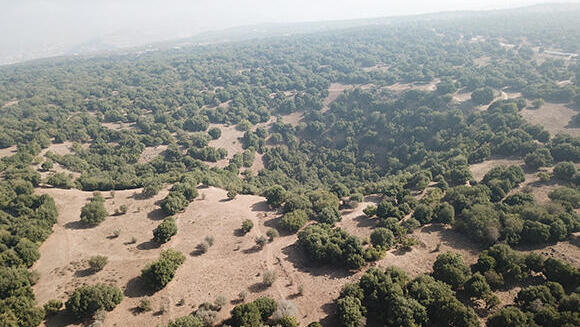

Natural 'Juba' in the Golan Heights
(Photo: Prof. Oded Aharonson, Davidson Institute of Science)
The researchers used LiDAR technology (LiDAR- Light Detection And Ranging) to conduct topographic mapping of the Juba region. This system involves an aircraft that emits short pulses of laser radiation to measure variable distances to the Earth’s surface.
With the help of this technology researchers were able to create a high resolution 3D model of the surface and to analyze the size and shape characteristics of surface elements using this model.
This type of characterization of the pits in the Juba region could, for instance, determine whether different types of depressions are found in the area, as well as delineate the characteristics of each type.
This approach also enables the researchers to formulate a more accurate definition of the Juba phenomenon, based on quantitative measurements and dimensions such as diameter, depth and the ratios between them.
This new definition could then be compared with measurements from craters and pits found on other planets, in order to deduce if there’s indeed similarity between the two phenomena.
The researchers identified 46 potential juba depressions in the area, out of which 17 were verified as previously surveyed “confirmed Juba depressions”.
Four of the depressions were found to be located outside the basalt flows, in adjacent sedimentary rock outcrops west of the known “Jubas” area, and an additional five depressions were classified as “suspected Juba depressions”. The remaining depressions were labeled “unclassified” and were excluded from the study.
Following data analysis, no structural differences were found between the depressions within the plateau basalt and those found in sedimentary rock layers, not covered by plateau basalt and far from volcanic activity, suggesting that both groups were formed by similar processes.
The researchers also identified asymmetrical slopes in the different walls lining the depressions, a finding that suggests that the depressions formed asynchronously, at different points in time and underwent processes of erosion different in duration.
The steepest depression, which is likely the youngest, cuts through a line of agricultural terrasses that were built during the last several thousands of years, suggesting that the terrasses likely existed prior to the formation of the depressions.
In addition, high-resolution topographic mapping enabled the researchers to accurately analyze Jubas that are in fact composed of multiple overlapping pits. If the Jubas were created through an explosion mechanism, it is likely that adjacent explosion sites would have covered each other with rocks ejected into the air during their formation.
However, no such covering layer was identified in either the Jubas or in their vicinity, making it an unlikely explanation for their formation.
Based on the study’s findings, the researchers concluded that the Jubas were formed by a process of collapse into underground caverns, rather than by explosions, as suggested in previous studies. The researchers suggest that several processes could lead to the formation of such underground caverns.
One of these processes could be Karst dissolution along sedimentary rocks underlying the basalt plateau, due to water seepage - a process that is also responsible for the formation of stalactite caves. Other explanations could be the emptying of adjacent magma chambers or the fracture of rock layers during tectonic activity of the nearby Dead Sea Transform.
What can the study of Jubas in the Golan Heights teach us about the pits on Mars? The researchers have noted that the average ratio between the depth and diameter of the Jubas, as measured during this research, is similar to that found in some of the pit clusters on Mars.
The similarities between the two pit clusters, the one on the Golan Heights and those found on Mars, are manifested in the similar dimension ratios and in a similar estimated geological environment, and indicates that they may have been formed by similar processes.
As a result, the researchers suggest that the Jubas at the Golan Heights be considered a geological phenomenon that is parallel to the collapse pits on Mars, as well as to similar depressions on other planets and moons in the solar system.
The extensive geological knowledge that exists concerning the Golan Heights and the region in which Jubas are found, alongside its high accessibility and the ease of working in the area, will allow them to answer new questions and enrich the study of distant geological phenomena, which would otherwise require unfathomable research grants to study directly.
A view from above, similar to Mars. Drone footage of diving into the Gevei Maish Cave, one of the Jubas studied during the course of the current study. Image: Prof. Oded Aharonson, Weizmann Institute of Science.


